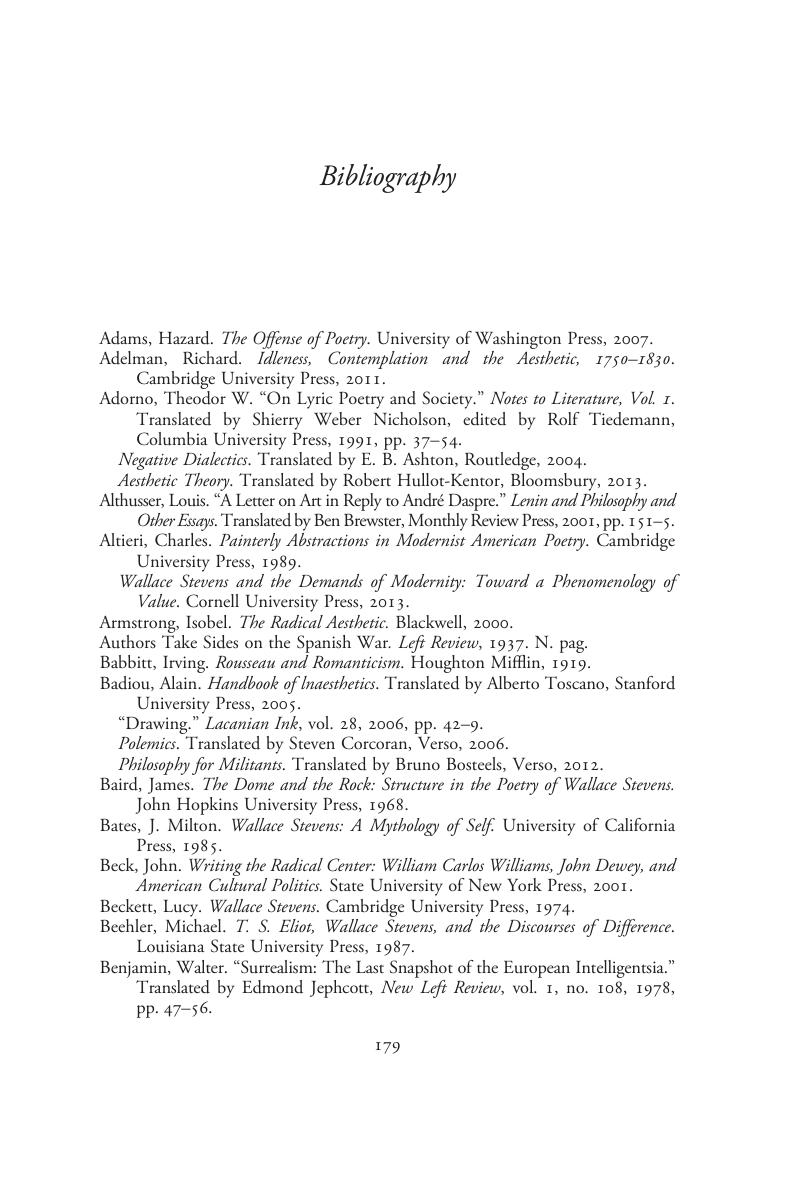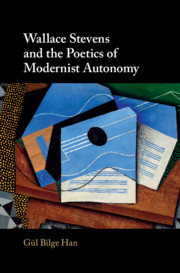Book contents
- Wallace Stevens and the Poetics of Modernist Autonomy
- Wallace Stevens and the Poetics of Modernist Autonomy
- Copyright page
- Epigraph
- Dedication
- Contents
- Acknowledgments
- Abbreviations
- Introduction
- Chapter 1 The Politics of Aesthetic Separation
- Chapter 2 Spaces of Autonomy
- Chapter 3 Community and Autonomy
- Chapter 4 Autonomy and Philosophy
- Coda
- Bibliography
- Index
- References
Bibliography
Published online by Cambridge University Press: 17 June 2019
- Wallace Stevens and the Poetics of Modernist Autonomy
- Wallace Stevens and the Poetics of Modernist Autonomy
- Copyright page
- Epigraph
- Dedication
- Contents
- Acknowledgments
- Abbreviations
- Introduction
- Chapter 1 The Politics of Aesthetic Separation
- Chapter 2 Spaces of Autonomy
- Chapter 3 Community and Autonomy
- Chapter 4 Autonomy and Philosophy
- Coda
- Bibliography
- Index
- References
Summary

- Type
- Chapter
- Information
- Wallace Stevens and the Poetics of Modernist Autonomy , pp. 179 - 193Publisher: Cambridge University PressPrint publication year: 2019



